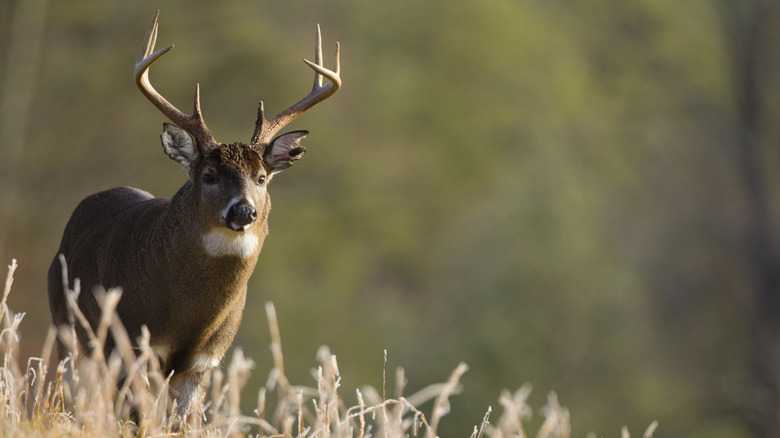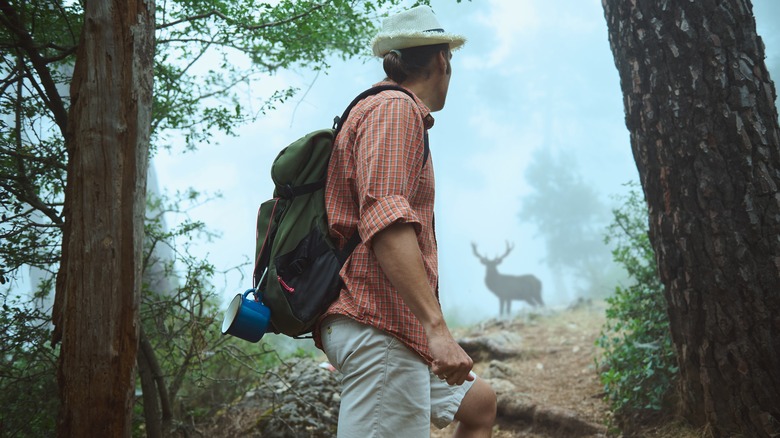What To Do If You Run Into A Deer During Your Next Hiking Adventure
We may receive a commission on purchases made from links.
Most hikers and others who enjoy spending time outdoors relish seeing wildlife on the trail. This is evidenced by the fact wildlife getaways are trending and have been for the past few years. However, although many outdoor enthusiasts actively seek an opportunity to view wildlife up close, each year there are a handful of these encounters that don't end well. While most folks are aware that it can be dangerous to run into a bear while hiking, many don't realize typically docile animals such as deer can also pose a threat under certain circumstances.
White-tailed deer are the most prevalent deer species in the United States and, therefore, the one you are most likely to encounter. Deer are typically not aggressive, but can become so in certain situations. Some of the most common reasons this happens is the deer feels threatened, a doe feels her fawns — young deer — are at risk, or bucks are hyper aggressive during the rut or mating season. Deer can also become aggressive if they are being fed or attempted to be handled by humans. Given that virtually every hiking trail in the United States is in territory inhabited by deer, it's important to know what to do if you run into a deer during your next hiking adventure.
What to do if a deer becomes aggressive
Deer are actually responsible for most animal-related deaths in the U.S. each year. However, most of these are from traffic accidents. Along the trail, deer are much more likely to flee when humans come near, although they are still capable of causing harm. Bucks can cause damage with antlers, while both bucks and does can inflict harm with hooves as well as butting or running into people. According to the National Deer Association, there are three primary reasons why deer attack: they are sick or injured, protecting their young, or have become habituated to humans.
The best thing to do if you encounter a deer on the trail is to give it plenty of space — especially if it appears sick, hurt, or has young fawns with it. Additionally, you should never attempt to feed, pet, or otherwise handle deer, regardless of how tame they may appear. Disrespecting wildlife in this way is one of the biggest mistakes people make when visiting national parks and other outdoor recreation areas and often leads to attacks.
If moving away does not deter the deer, try making noise to scare it away. A few shrill blasts on a safety whistle, such as the LuxoGear Survival Whistle, will usually do the trick. But, if the deer stands its ground, tucks its tail against its body, lowers its head, and gives you a serious look, odds are it's preparing to attack. If the deer charges, make yourself look large and wave your arms. As it gets closer, if you have bear spray, use it. Otherwise, put something, such as a large tree limb or backpack, between you and the deer. If you get knocked over, get in a fetal position and play dead until the animal loses interest and leaves.

